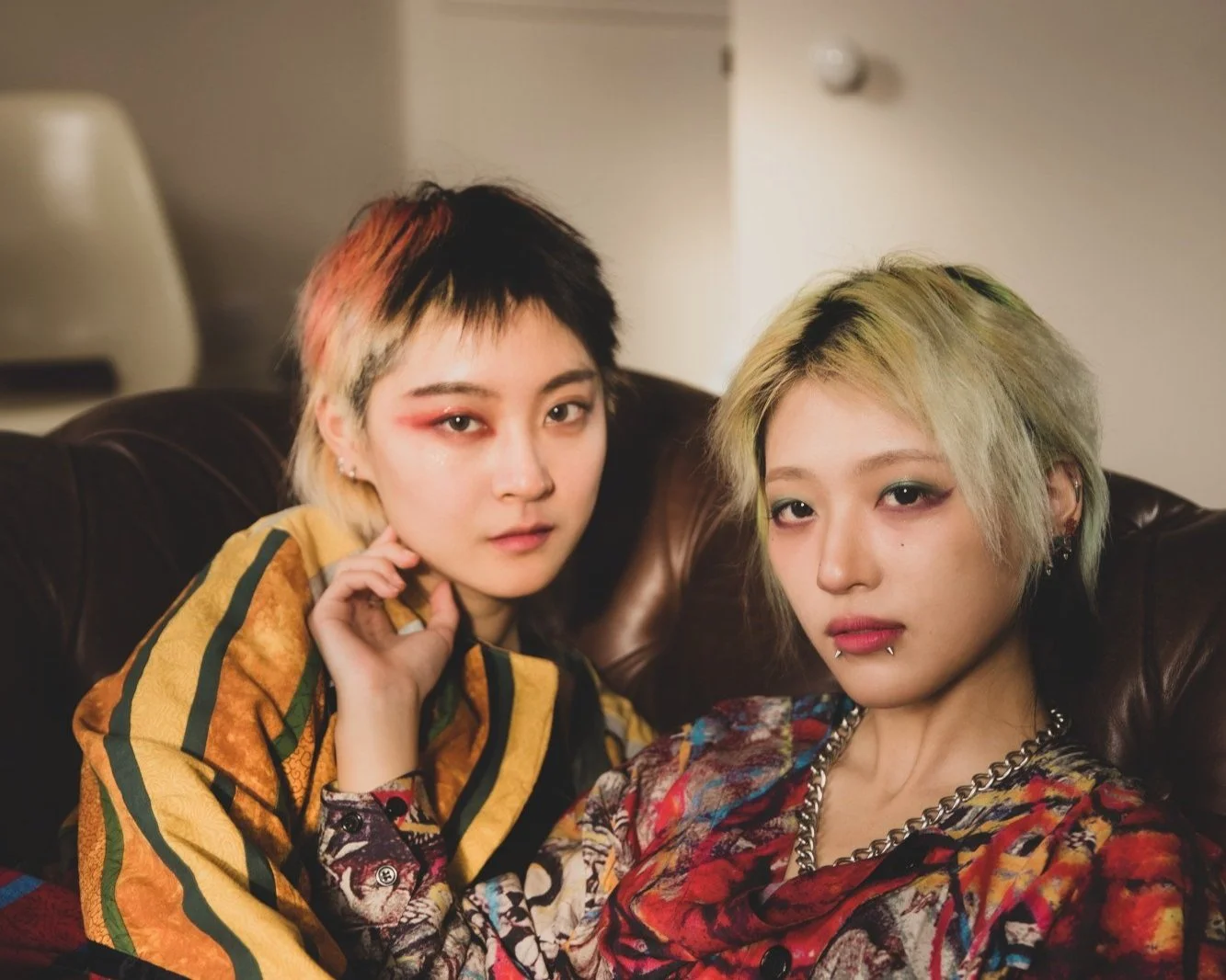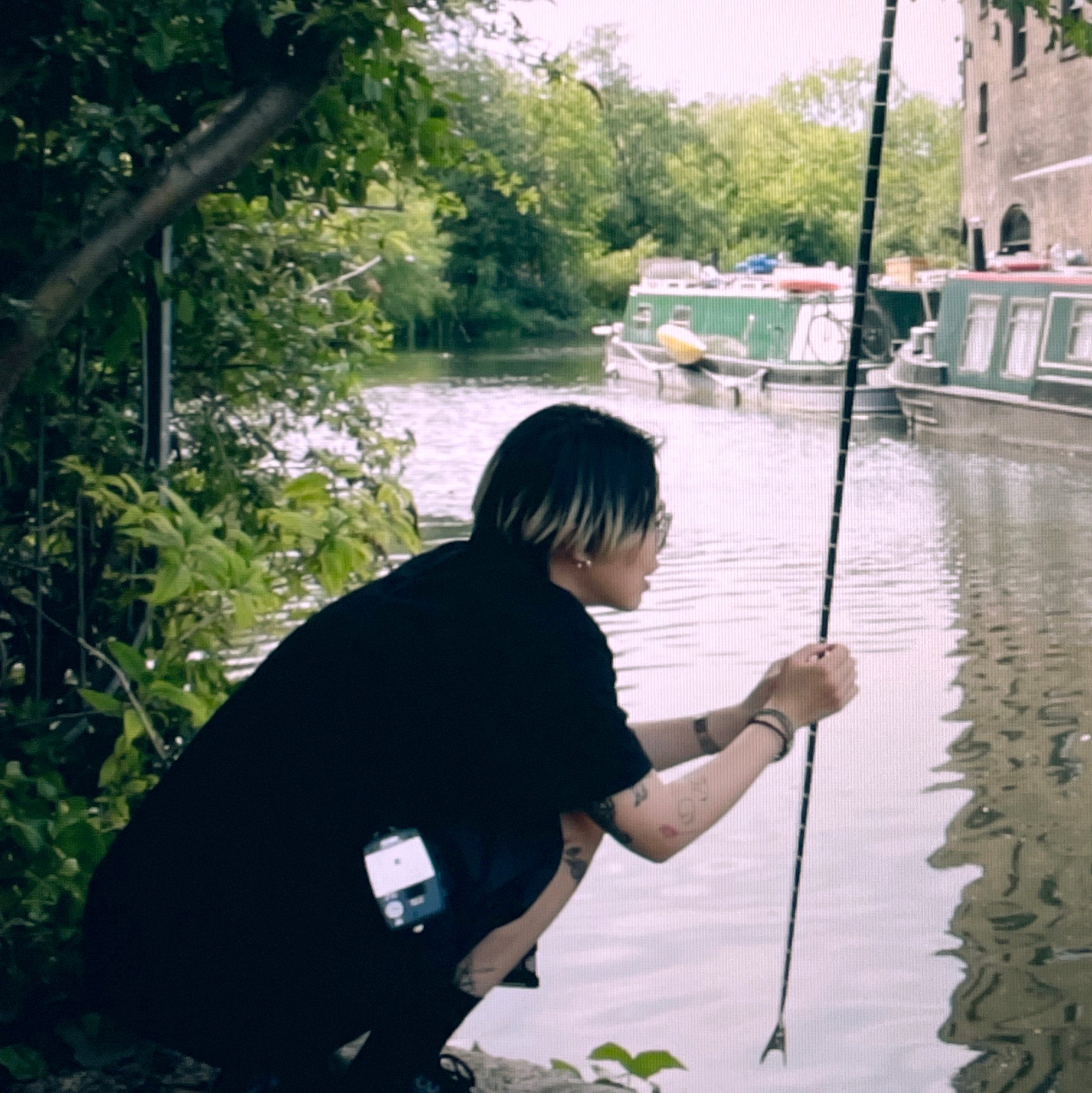10 Questions with Shou-An Chiang
Al-Tiba9 Art Magazine ISSUE12 | Featured Artist
With an MA in Contemporary Photography, Practices and Philosophies from Central Saint Martins, University of the Arts London, Shou-An Chiang currently lives and works in London. She works across photography, video, performance, and installation, in which she explores the ambiguity of relationships and identities, and portrays alienation in a pluralistic society from her own experience. Recent exhibitions include: Solo exhibition 'QUEERASIAN' at Liquid Gold Studios, London (2022); Duo Exhibition' Images Scene 2: Mirror, Mirror Sticker, Projector' at broom design, Tainan (2022), Group exhibition' 8 x 12' at FLOOR_, Seoul (2022), Group exhibition 'Bon Voyage!' at Slash Arts, London (2022) and Group exhibition 'Visual Noise' at Maryland Studio, London (2022). The co-produced film 'Separated' (2021) is funded and premiered in Taipei by Together We Film (其中短片頻道). Invited to New York and Philadelphia, USA to perform in the immersive performance 'Where Are You Today?' (2022). Media Interview: 'These photos reclaim young queer Asians from tired stereotypes' featured on DAZED (2022).
Shou-An Chiang - Portrait
ARTIST STATEMENT
Chiang's practice explores the ambiguity of relationships and identities and uses her experiences to delve into the sense of alienation in a pluralistic society in a changing global context. She grew up in Taiwan and lived in the UK for three years. Thus she can look back on her life experiences with a relatively broad perspective. The current situation is closely related to Taiwan's role in the world and the national identity of the Taiwanese people. Since childhood, Chiang has tried to find her identity in a blurred political landscape. This search for recognition encompasses a variety of meanings, not only ethnic and cultural but also gender and sexuality. Her recent project, QUEERASIAN, portrays queer Asian people in Western society, and aims to show the faces and stories of these communities from an insider's perspective.
Yurika and Shao Shuai 1 (from the series QUEERASIAN), photography, 2022 © Shou-An Chiang
QUEERASIAN | Project Description
My camera has always been drawn toward storytelling in the form of portraiture. One day I noticed an advertisement on the tube. It showed how friendly the London tube network wants to be – represented by a photograph of two girls of colour facing one another with a look of love. The slogan was brief, saying “dinner date”, implying that the two in the photo are romantically involved.
I appreciated that they attempted to be inclusive. However, the next thought that came to my mind was: why have I never seen Asian faces in “gay" adverts or seen Queer Asian people presented anywhere else in this manner? Why is it that our Asian identities are only shown based on race or ethnicity but not sexuality?
QUEERASIAN explores our identities and stories from an inside perspective. It investigates the multifaceted experiences of the LGBTQ+ belonging within the Asian diaspora and those who do not conform to the norms of Western society through a series of environmental portraits. I hope to provoke discussions and open dialogue; about feeling boxed in whilst defying the norm.
(Translated from Mandarin to English by Lucian Wu)
Liam 1 (from the series QUEERASIAN), photography, 2022 © Shou-An Chiang
Get your limited edition copy now
INTERVIEW
How would you describe Shou-An Chiang to our readers in three words?
Soymilk. Candles. Akira.
You were born and raised in Taiwan but currently live and work in London. What is one thing you miss from Taiwan? And what is one thing you appreciate about living in London?
I was actually born in New Zealand. However, I was taken back to Taiwan before I could remember.
What I miss most about Taiwan is the cheap and tasty food, especially the breakfast place across the road from my university.
The artistic atmosphere of London is what I find most appealing. There are countless exhibitions every day, and most of them are free. It is also a place where you can meet artists with various perspectives and disciplines. It's like everything is possible in this city.
Chi 2 (from the series QUEERASIAN), photography, 2022 © Shou-An Chiang
How did these different experiences shape the person you are today? And do they influence your work?
From New Zealand to Taiwan to the UK, I guess the sea and island culture along the way has somehow shaped my practice. It was a constant feeling of being adrift, isolated, and at a loss. It was also a way of forming my desire to connect with people. The search for self-identity is one of the first requirements for finding a sense of belonging. Whether it is national, ethnic, cultural, gender, or sexual identity, I think it is all-important in this context. My practice is based on personal experience, and I try to draw the viewers' experience into it as part of my work. For example, 'London x Body x Be Loved' is a nostalgia-themed video diary that uses installation to create an immersive space for the audience. There is also 'Aquarius Fax', a remote interactive artwork that explores the differences in epidemic prevention policies between the UK and Taiwan, allowing participants from as far away as Taiwan to receive messages from the UK via the ibon machine. The QUEERASAIN portrait project, which started to be developed this year, is also in response to the queer cultural differences between Taiwan and the UK. With my identity as an ethnic minority, this double sense of marginality and contempt made me start to think about this issue in a foreign country and develop it into a work.
Let's talk about your series QUEERASIAN. In your statement, you mention first getting the idea from an ad on the Tube. This sparked a reflection on Asian representation, especially in relation to the LGBTQ+ community. How did you develop this first idea into the series we can watch today?
At first, I started with my friends who were close to me. Gradually, friends of friends joined the project. After about the third month, strangers started to show interest, and I began photographing them. Then it developed into what it is now. And it is a long-term project in progress. I'm not sure what it will look like in the end. I like to go with the flow.
Lidan 2 (from the series QUEERASIAN), photography, 2022 © Shou-An Chiang
Wesley (from the series QUEERASIAN), photography, 2022 © Shou-An Chiang
Adhya 2 (from the series QUEERASIAN), photography, 2022 © Shou-An Chiang
Shao Shuai (from the series QUEERASIAN), photography, 2022 © Shou-An Chiang
The representation issue is central in contemporary discourse. How much can art help in addressing such themes?
I see art as a means of communication. The work can open up a dialogue. The exhibition spaces (whether online or physical) provide opportunities for these questions thrown out by the artists to reach a wider group of people. The representation can quickly give people an idea of the core concepts that the artist wants to express. In my QUEERASIAN project, the point of representation is not only to make people outside the communities aware of the fact that some exclusion or prejudice still occurs in society but also, I hope, to inspire my compatriots within the communities. In the process, I have seen more possibilities for self-identification. I hope that, in some way, I can show these close to countless kinds of self-realisation.
How did you choose the subject to photograph and the setting for the portraits? Did you pair them for any specific reason?
What I am doing is an anthropological photography and documentation project. I don't think I'm qualified to select subjects to 'represent' the group. All I can do is record and present each face as best I can. So basically, everyone who responded to my email was photographed. But as this is a long-term project, I'm taking it very slowly; there are still many people on the waiting list. I want to chat well with each participant through this process, rather than just hunting down a slice of their lives and then leaving.
I started the project by visiting the participants and shooting in their homes in a half-documentary, half-editorial setting. I thought being in a familiar, private environment would be more relaxing. But recently, this idea has changed. The home can sometimes carry too much meaning. So now I feel that I can be very open about the location. The main principle is to make the subject feel physically and mentally comfortable.
We usually say that a picture is worth a thousand words. In a society overloaded with images like the one we live in, do you think this is still true nowadays?
I still believe there is no limit to the amount of information conveyed in a single image. But only if the authors are conscious of their work and the viewer has the patience to look closely.
Jess 1 (from the series QUEERASIAN), photography, 2022 © Shou-An Chiang
Wing-Yee 2 (from the series QUEERASIAN), photography, 2022 © Shou-An Chiang
You work with different mediums, from photography to video, performance, and installation. Do you plan to adapt the QUEERASIAN project to any other medium?
Yes. I have recorded the voices of shooting and chatting with the participants' consent as the process documents. These recordings are full of everyone's pitch, vocal expressions, emotions, and memories. There is also a lot of silence, with just the sound of the shutter in the background. I consider these to be valuable materials. To translate it into text would be to lose the richness that sound can contain. So in the future, I will try to present this series with sound.
How did the public receive the project?
Mostly online. Like Instagram and online magazines. However, I held a physical exhibition in London in May this year. Many passers-by were curious and came in to see and chat with me. Also, last month I was invited to have an artist talk with another anthropological documentary filmmaker at SOAS University of London. Both of these physical events opened up many deep conversations with the audience. Even now, I still feel that I have gained so much.
I look forward to many more opportunities to exhibit physically and engage in face-to-face conversations with the public.
And lastly, do you have any plans to exhibit or publish the project in the future?
Yes. I'll take any opportunity to bring the project to light. Exhibitions and publications are both options that have been considered. The last exhibition was focused on the photographic medium, but for the next one, I hope to focus on sound. The publication is still in the planning stage. There are plans to publish on a semi-annual or annual basis to accompany this long-term project. There was a trial issue that was printed and displayed at the exhibition. I think the next step is to seek more resources to improve the design of the content.

























